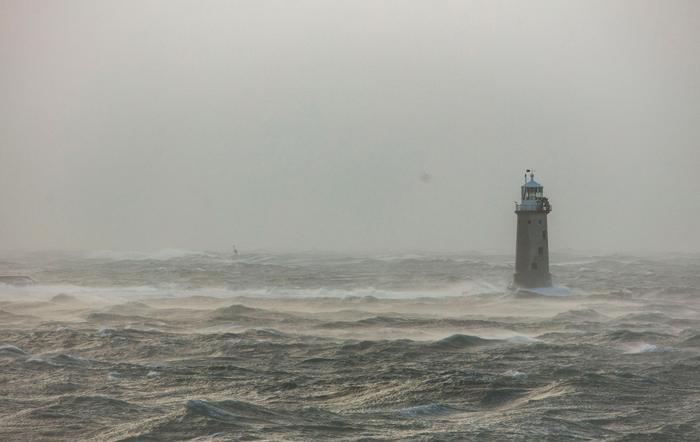Extreme weather events such as hurricanes and storms have increased in both frequency and severity in recent years.

Credit: Lloyd Russell/University of Plymouth
Extreme weather events such as hurricanes and storms have increased in both frequency and severity in recent years.
With that has come heightened public interest, resulting in often dramatic footage being live-streamed on platforms such as YouTube, TikTok and Discord.
Now, a new study conducted at the University of Plymouth has for the first time analysed what might be motivating people to watch these streams – in some instances for up to 12 hours at a time.
The research centred around the live-streaming of three events – Hurricane Irma in 2017, Hurricane Ian in 2022, and Storms Dudley, Eunice and Franklin in 2022.
Through a detailed analysis of viewers’ comments, it was found that people in affected areas were using streams to discuss official government risk advice they had received – for example, about whether to evacuate.
Others were drawn to the streams because they had a previous connection to the affected region. For these people, watching live footage – which included taking time to share messages of ‘hope’ for the hurricane or storm to pass without destruction – was a way of showing support to places and people impacted by the event.
The research was published in the journal Environmental Hazards and conducted by Dr Simon Dickinson, Lecturer in Geohazards and Risk in the University’s School of Geography, Earth and Environmental Sciences.
He said: “When dramatic things happen – whether that relates to extreme weather or events like tornados or volcanoes erupting – people flock to watch. You might assume that this is just a form of online ‘rubber-necking, and that people are naturally drawn to spectacular sights. However, this study has shown that the drivers to watch extreme weather footage are more complex. Live-streams provide the opportunity for people in, close to, and far away from the event to interact in real time. The footage becomes a marker that people use to sense-check their understandings of how significant the event is, how hazards work, and as an online gathering point to share experiences of similar events. It is a fascinating insight into human behaviour that has previously been unexplored.”
The research focused on nine live-streams of the 2017 and 2022 hurricanes and storms, which broadcast a total of 65 hours of video footage watched by more than 1.8million people.
During that time, over 14,300 comments were left by 5,000 unique accounts, a reflection of the fact that footage focused on unfolding events of national or global importance generate higher-than-normal audience engagement.
Many of the streams were already existing webcam channels that were repurposed during the hurricane or storm, such as webcams that streamed beach or port conditions. In some instances, affected people streamed live-footage from their own house security or doorbell cameras.
The study demonstrates that people are keen to learn more about the science behind what is happening, highlighting the need for further work that examines how people are using new technologies to make sense of hazard risk.
Dr Dickinson added: “Although scientists are getting better at communicating risk, people are far more likely to discuss hazards in informal and relatively unmoderated settings. Moments of extreme weather are important because they focus people’s attention and generate discussion about hazards, how they work, and how they will increasingly affect us in future. New digital practices – such as live-streaming – are thus important for us to understand because they’re not just spaces of disaster voyeurism. Rather, they’re spaces of learning, community and emotional support in a world that can feel increasingly volatile.”
Journal
Environmental Hazards
Method of Research
Observational study
Subject of Research
People
Article Title
Watching the disaster unfold: geographies of engagement with live-streamed extreme weather
Article Publication Date
5-Apr-2024



